D046 Celestron C11 - Einfluß von Back Focal Lenght
29.07.2007, 15:50
gesamter Thread http://www.cg-5.de/forum/archive/index.php/t-8750.html
siehe auch hier: http://www.astro-foren.de/showpost.php?p=33691&postcount=6
Dear John,
the influence of the back focal lenght on the Gauß error,the PV wavefront und the Strehl is marginal. The
following shows the situation.
A distributer of the Schmidt Cassegrain telescope would guarantee lambda/4 PV wavefront, but he would not
tell you the spectral color of that value. In most of my examinations the best values you get in yellow or in
red light, green is slightly overcorrected in general. Now you can ask for the influence of the back focal lenght:
Does it change anything of that situation or not - I guess not. Some customers ask for a selected telescope,
but they will never pay for a better quality. To get a selected telesope one have to test twenty SC's a day,
or you should have sophisticated certificates of every telescope, but this makes the telescopes much more
expensive.
Now John sent me by email a diagram how the back focal lenght varies the PV-value. But I don't know how do you
measure this? Therefore I varied the distances as the next foto of John shows. But if you use any 90° prism or any
binocular you can't get such short back focal lenght. In general you have a distance of about 130 mm back focal lenght.
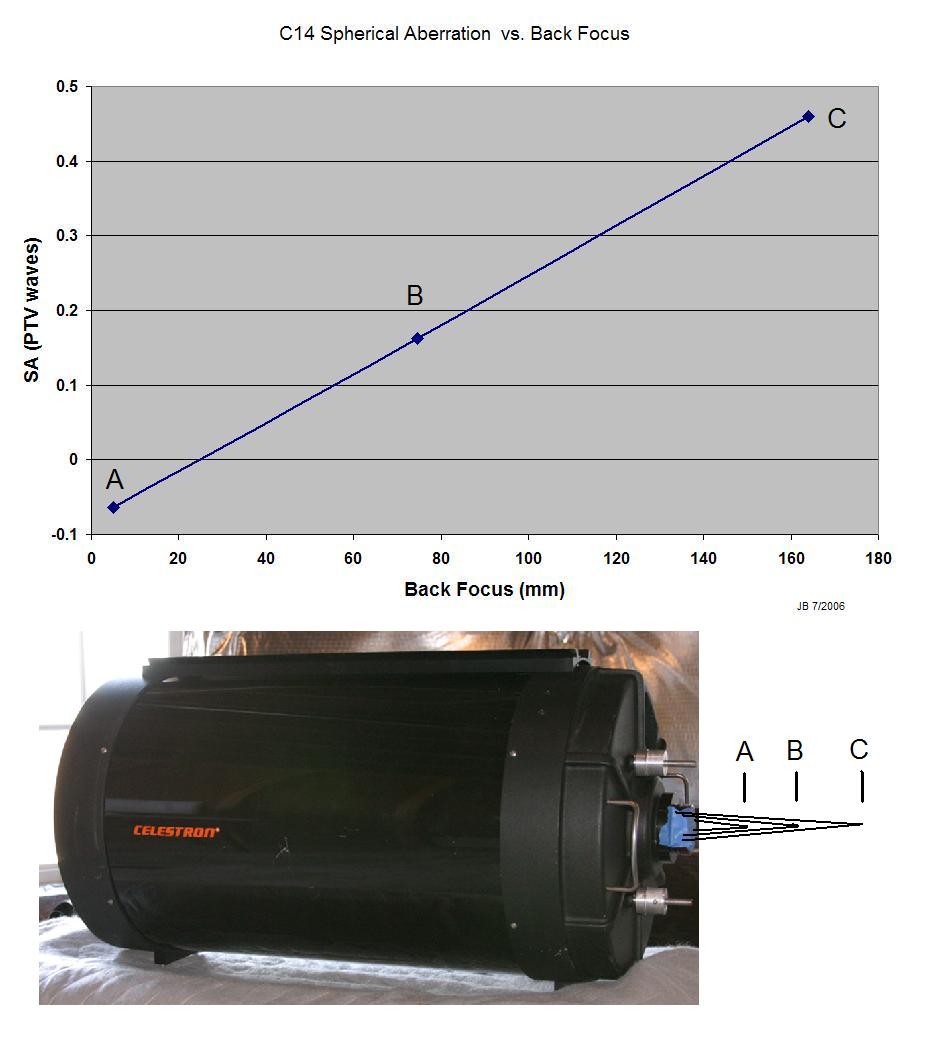
In my inquiry I tested this problem in three positions: 097 mm, 127 mm and 157 mm to the focus as the foto shows. Later
the fringes maps will show the result. Look, the visual Reducer need 35 mm or more for itself.

You shouldn't compare a SC-system with any other one, not with a Maksutov and in no case with a normal
apochromatic objectiv. The next fotos shows the normal situation of most of the SC telescopes: All kind of zones and
no smooth surface of the wafefront. You can get a high Strehl value in yellow or red color, sometimes at 546.1 nm wave
(green) but this rough surface decreases the contrast a lot.

This can be shown with the Lyon-test or phase contrast test what shows the producing steps of the Schmidt plate
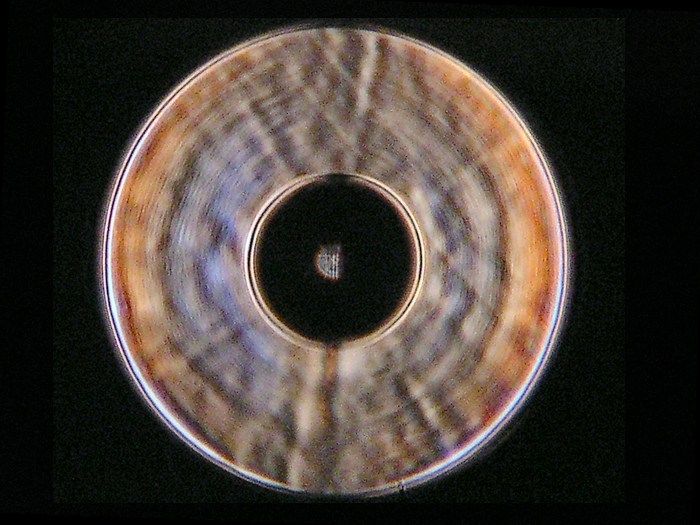
The 3D-Model of that with color information
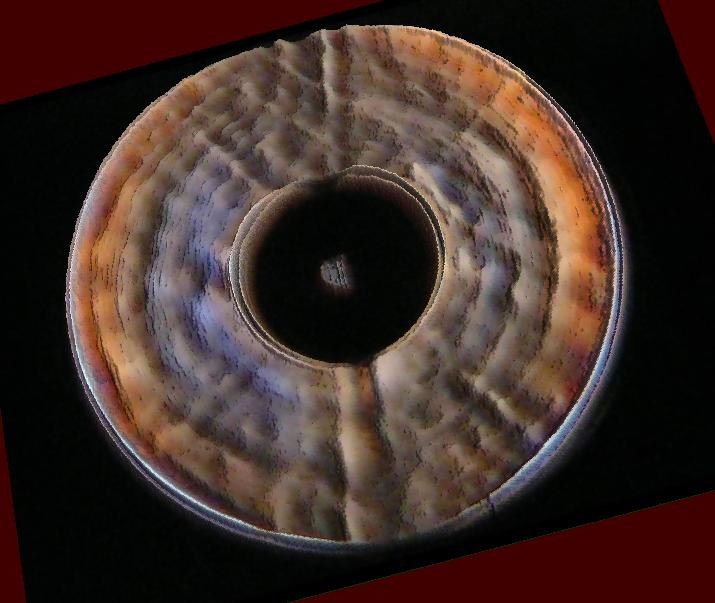
and the the 3D-model without colors shows that in gigantic way.
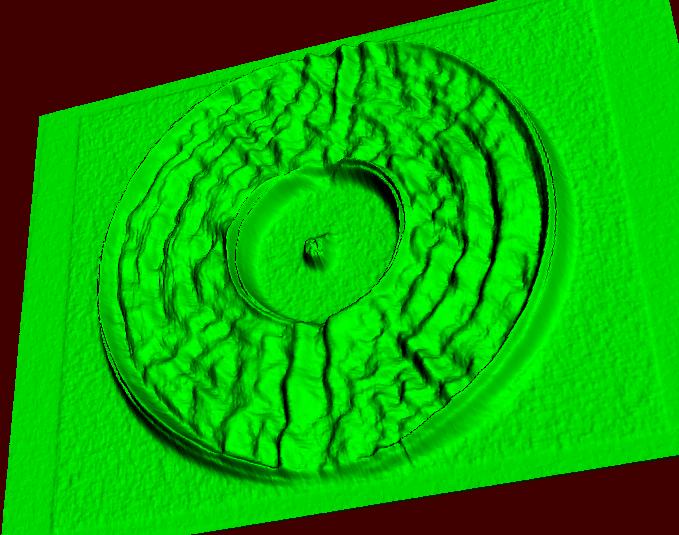
the same situation at 587.6 nm wave intrafocal with Ronchi 13 lp/mm in autocollimation/double pass. The lines should be
straight, but here it shows the surface roughness.

All colors have the same focus, but blue is allways overcorrected, green slightly, too and the optimum of most of
these telescopes are at yellow or red light, and that depends from the back focal lenght. In blue light that telescope
varies from 097mm - L/2, Strehl 0.72; 127 mm - L/2.1, Strehl 0.705; 157 mm - L/2.1, Strehl 0.691; the best situation
you get at yellow with no significant values of PV and Strehl. If the back focal lenght to long, the optimum moves to red
light at 656.3 nm wave green and blue are more of overcorrected.
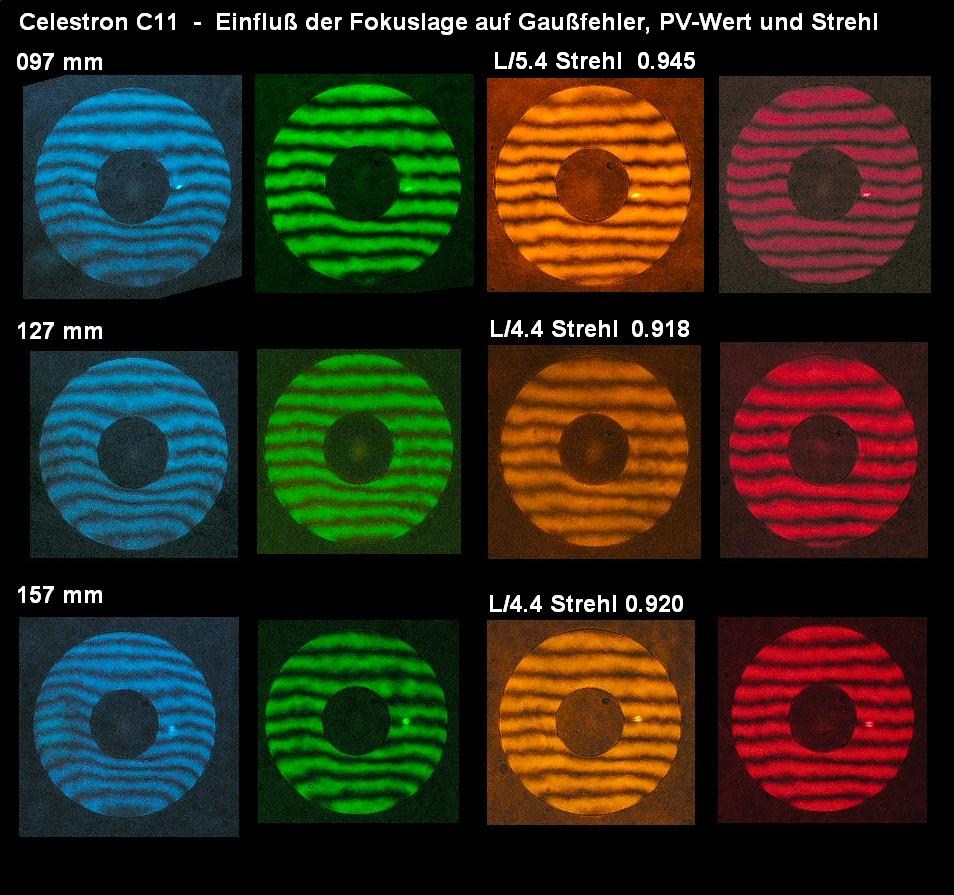
That is why I told you, there is no significant influence if you vary the back focal lenght. And to get one selected SC-
system, you should test many, many SC telescops.
In double pass at a flat you get this one

and this shows the star test in a 3D-model version.


